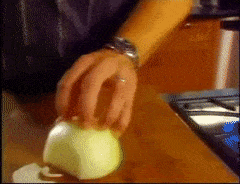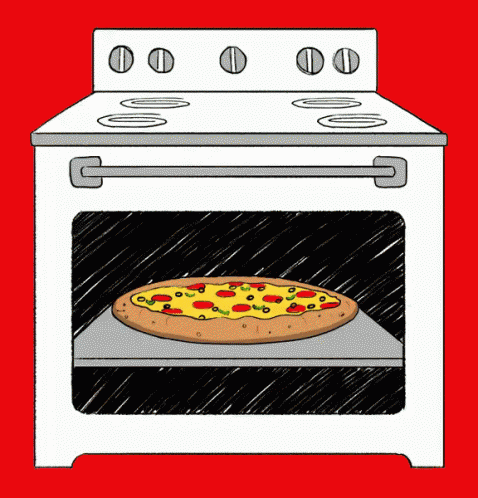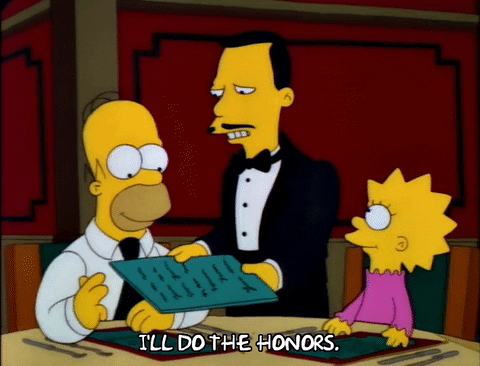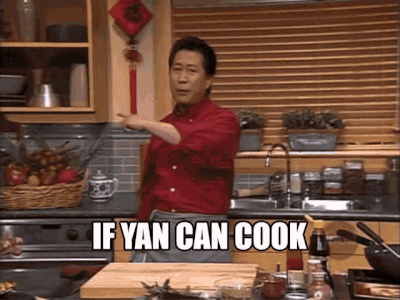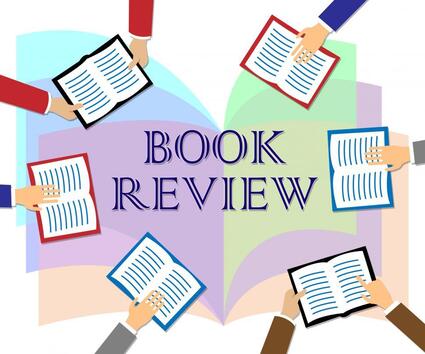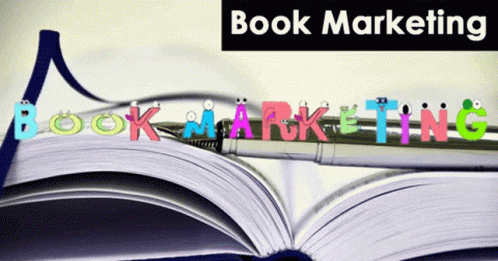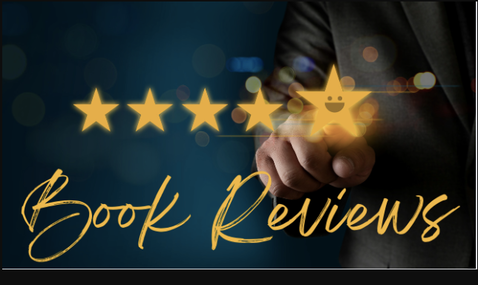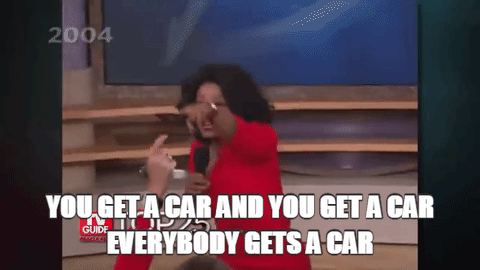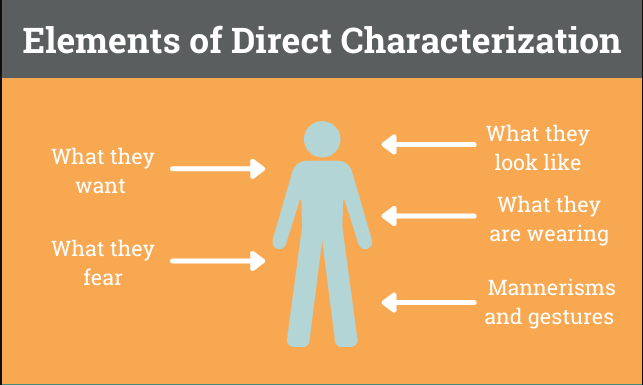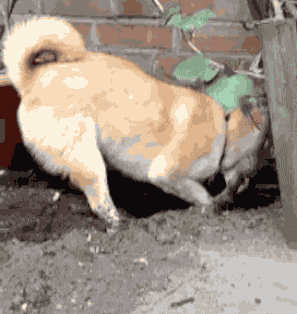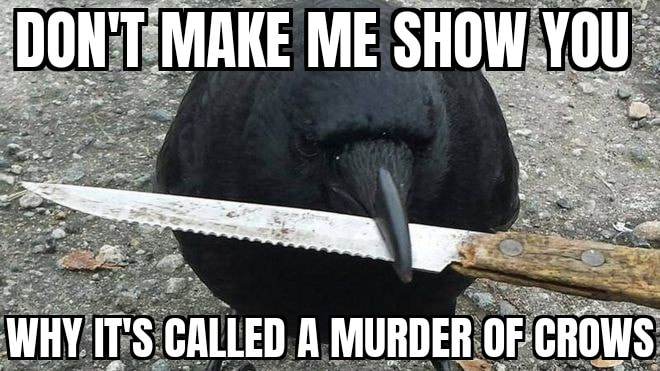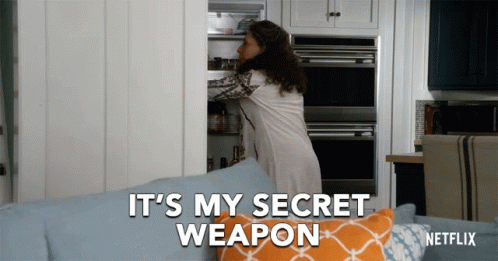AuthorHi, I'm Ray Evans. I'm a certified copyeditor and proofreader. Archives
September 2023
Categories |
Back to Blog
Hey there, fellow word connoisseurs! Now, if you're an author diving headfirst into the chaotic ocean of fiction writing, let me tell you, the last thing you need is a story that's as flat as a pancake, right? So let's chat about how to deepen your narrative, how to lace it with meaning like you're embroidering a fancy handkerchief for your grandma's birthday. Buckle up, folks, we're about to plunge into the theme pool! 1: Finding Your Theme, or The Great Theme HuntYou know, the first step in weaving deeper meaning into your story is akin to that famous quote from the movie 'Field of Dreams', "If you build it, they will come." Here, replace "it" with "themes." Identifying your theme is like finding the North Star in a sky filled with celestial bodies. Maybe it's an examination of the human condition, maybe it's about resilience, or heck, it could even be about the ceaseless pursuit of the perfect cup of coffee. Look into the heart of your story, and you'll find the theme waving back. 2: Nurturing Your Theme, or How to Grow Your Theme BeanstalkNow, once you've located your theme, treat it like a rare species of orchid or a sourdough starter. You've got to feed it, nurture it, give it room to grow. Develop your theme by weaving it into the plot, the characters' development, and their dialogue. Like a talented sous-chef, sprinkle it subtly throughout your narrative. 3: Displaying Your Theme, or The Art of the Theme PeacockNow, it's time to show off your theme. Like a well-prepared Thanksgiving turkey, it's got to be right in the center. But remember, subtlety is the key. Nobody wants to be hit over the head with a theme wrapped in a metaphorical brick. It's all about the gentle nudge, the subtle hint, the soft whisper. Create moments within your story that reflect your theme, and let it organically seep into your readers' consciousness. 4: Repeating Your Theme, or The Theme MantraRepetition can be a great tool, if you're not making a mixtape for your high-school sweetheart. Use symbolic motifs, recurring characters, or repeated phrases to echo your theme. Like a catchy pop song, you want your theme to stick in your readers' minds long after they've closed the book. 5: Resolving Your Theme, or The Theme DenouementAs your story draws to a close, so should the exploration of your theme. This doesn't mean wrapping it
up with a neat little bow - life is seldom so accommodating. But you want to offer some resolution, some satisfaction to your readers that their investment in your theme was worthwhile. Remember, authors, infusing your fiction with a resonant theme isn't just the cherry on top of the literary sundae, it's the hot fudge, the sprinkles, and the whipped cream. It's what makes your story more than just words on a page, but a narrative that lingers, like a haunting melody or the aftertaste of a fine wine. Now, get out there and start exploring your themes!
0 Comments
Read More
Back to Blog
Alright, folks, gather 'round. Today we're mixing a batch of the good stuff: the Storytelling Salsa. Yes, my dear writerly compadres, we're talking about blending those juicy tomatoes of plot, those zesty onions of character, and those fiery jalapenos of conflict into a narrative dip so irresistible, your readers won't be able to put it down. And remember, this isn't some pedestrian pico de gallo we're whipping up. This is a gourmet, artisanal salsa. 1) Find Your Freshest Ingredients (Idea)Like any good salsa, a story starts with fresh, quality ingredients – in our case, ideas. Now, I don't mean you have to come up with the plot equivalent of a unicorn playing a harpsichord on the moon. No, the secret is in taking the everyday, the familiar, and adding your own unique twist. Think of it like this: tomatoes are common, but toss in a dash of smoked paprika and suddenly you've got a taste sensation. 2) Dice Those Characters (Developing Characters)Characters are the onions of your storytelling salsa. You want to dice them up, expose all their layers. Make them real, make them relatable, but most importantly, make them interesting. You don't want some watery, bland onion ruining your salsa, right? Same goes for characters. Give them quirks, give them motives, give them life. It's the difference between a forgettable crudité and a fiesta in your reader's mouth. 3) Turn Up the Heat (Conflict)What's a salsa without a little heat? Conflict, folks, is your jalapeno. It fires up your story, gives it that edge-of-the-seat, can't-stop-reading spice. But remember, not everyone likes their salsa mouth- meltingly hot. Balance is key. Enough conflict to keep things interesting, but not so much it overwhelms the other flavors. 4) Blend it All Together (Plot)Plot is where all the ingredients of your storytelling salsa come together. This is where you blend, mix, and season until you've got a narrative that's smooth, satisfying, and just the right amount of spicy. Remember, it's not just about tossing things together willy-nilly. You're a chef, a maestro of the written word. Every twist, every turn, every character decision should be as deliberate as your choice of cilantro or parsley. 5) Sample and Adjust (Revision)Even the best chefs taste and adjust their dishes. Your first draft? That's your initial mix. Now it's time to sample. Too bland? Add conflict. Too confusing? Clarify that plot. Characters falling flat? Dice 'em up and add some flavor. This step, my friends, is where good stories become great stories. 6) Serve it Up (Publishing)Finally, it's time to dish out that delicious storytelling salsa to your eagerly awaiting readers. Whether it's through traditional publishing, self-publishing, or serializing your work online, don't let your salsa sit in the fridge. Get it out there, let people taste it, and brace yourself for the applause (and constructive criticism - a chef's work is never done, after all). In Conclusion...In conclusion, authors, remember: writing is like creating the perfect salsa. It takes fresh ingredients,
patience, and a dash of creativity. But when all those flavors come together? Chef's kiss You've got yourself a story readers won't be able to resist. So get out there and start cooking!
Back to Blog
Alright, folks, buckle up. We're about to take a wild ride down the curvy, often treacherous, road of crafting a compelling plot. But don't worry, I promise it's going to be as fun as a roller coaster ride, but with fewer whiplash claims. Plot Structures: The Building Blocks of Your Fictional EmpireFirst off, let's talk plot structures. They're the backbones of our stories, the foundation that keeps everything upright, sort of like the starch in a stand-up guy's collar. Now, you could go with the classic three-act structure: Setup, Confrontation, Resolution. It's a reliable old workhorse, like an '86 Buick LeSabre. It's not flashy, but it'll get you from point A to point B. But hey, maybe you're more adventurous, right? Maybe you want your plot to have as many twists and turns as Lombard Street in San Francisco. In that case, you might consider something like the Hero's Journey or the Seven-Point Story Structure. These are more intricate, sure, but they also come with GPS navigation and a rear-view camera. In other words, they provide a clear roadmap for your story and make it less likely that you'll accidentally back over your own plotline. Building Tension: The Fictional Blood Pressure CuffOkay, you've got your structure nailed down. Now, how do you keep your readers on the edge of their seats, biting their nails, and doing all the other clichéd things we say when we mean "engaged"? One word, folks: tension. Tension in a story is like the rubber band around a wad of bills – it keeps everything together and gives you a satisfying 'snap' when you finally let it go. Creating tension is like cooking a gourmet meal, you've got to season it just right. Add too little, and your story is as bland as a tofu turkey on Thanksgiving. Add too much, and it's as overwhelming as Aunt Mildred's perfume at a family reunion. Remember, your readers are not just passive observers. They're more like detectives, piecing together clues, making predictions. So give them a breadcrumb trail to follow, but don't make it too easy. Like a good magician, you should always keep them guessing. Just when they think they've figured it out, pull another rabbit out of your hat. Or a pigeon. Or a small, yappy dog. Whatever keeps them on their toes. Twisting the Plot: The Storyteller's Chiropractic AdjustmentFinally, let's talk plot twists. The sudden left turns that make your readers' heads spin like they're on
the Teacups ride at Disneyland. But be careful. A good plot twist should be like a surprise party – unexpected, but in hindsight, all the signs were there. If it comes out of nowhere, it's less of a plot twist and more of a plot assault. Plot twists should be like Dennis Rodman in a wedding dress – shocking, but somehow fitting. They should be rooted in the characters' actions and decisions, not dropped in from the sky like an anvil in a Looney Tunes cartoon. They should feel inevitable and surprising at the same time, like finding out your high school math teacher is also a semi-pro Elvis impersonator. In conclusion, crafting a compelling plot is a bit like juggling flaming chainsaws. It's tricky, dangerous, and not for the faint of heart. But if you can pull it off, the results are spectacular. So go ahead. Pick up those chainsaws. Just, you know, maybe wear a helmet or at least some sensible footwear. And remember, no matter how daunting it may seem, every great story started with someone daring to juggle their own set of chainsaws. Now, it's your turn to dazzle the audience. Go forth and write with the audacity of Evel Knievel jumping the Grand Canyon. Just remember to stick the landing.
Back to Blog
Hello there, wordsmiths of the world! Ray Evans here, your resident word-juggler and punctuation patroller, bringing you the lowdown on how to turn your literary masterpiece into a cash cow. Now, I know what you're thinking, ", Marketing my books really as fun as a colonoscopy?" Well, I'm here to tell you, it can be... if you've got the right strategies up your sleeve. So, sit back, relax, and let's dive into the world of book marketing - no anesthesia required! 1. Building an Author Platform: You're the StarFirst things first, to sell your book, you need to sell yourself. No, no, not like that. I’m talking about building an author platform. This is your online stage where you strut your literary stuff. It could be a website, a blog, or a YouTube channel where you recite your book backward in Pig Latin. Whatever floats your boat, mate! The goal here is to showcase your personality, your writing prowess, and most importantly, your undying love for caffeine. Let readers get to know you, feel connected, and before you know it, they'll be buying your books like hotcakes. 2. Social Media: The Land of the Free and the Home of the Self-PromoSocial media is a bit like a high school reunion; it's awkward, everyone's trying to show off, and you're not quite sure why you're there. But here's the secret - it's a gold mine for independent authors. Twitter, Facebook, Instagram, TikTok - choose your poison. It's about connecting with your audience, engaging them with behind-the-scenes peeks and witty one-liners. Remember, consistency is key. So, keep at it and, hey, if all else fails, there's always cat memes! 3. Leverage Book Reviews: Say It, Don't Spray ItNow, as much as we'd like to believe that our book is the next War and Peace, feedback can be a kick in the pants. But don't despair, my literary comrade! Reviews are a crucial part of the marketing process. Get your book in the hands of reviewers, bloggers, and anyone with an internet connection and an opinion. Positive reviews can skyrocket your book's credibility faster than a Kardashian can break the internet. 5. Book Fairs and Events: Step Right UpFinally, never underestimate the power of a good schmooze. Book fairs, literary festivals, and other
events are your chance to rub elbows with your readers, network with other authors, and possibly score a free muffin. It's all about visibility, baby! So get out there, shake some hands, sign some books, and remember to smile. So there you have it, folks, your five-step program to becoming a marketing maven. Remember, it’s a marathon, not a sprint. And like my yoga instructor keeps telling me, it’s all about the journey, not the destination. So, buckle up, enjoy the ride, and soon enough, you'll see your book
Back to Blog
Hey there, word nerds! Now, I don't want to get off on a rant here, but let's chat about that literary Everest you're aiming to scale. You've penned your magnum opus, the one that's going to have your name sparkling brighter than Hemingway’s Mojito glass. But what now? How do you get this verbal masterpiece into the hands of your adoring public? The answer, my friends, is as straightforward as a George R.R. Martin death scene – build and leverage a mailing list. I know, I know, it sounds about as glamorous as a Cormac McCarthy novel, but trust me, it's an author's secret weapon more potent than Tolkien's One Ring. So, let’s deep dive into it, shall we? Step 1: Build the List, Not the PyramidsBuilding a mailing list isn't like crafting a pyramid, folks. It's not some Herculean task that requires the strength of ten novelists (and let's face it, we're more 'coffee shop' than 'CrossFit'). Start by adding a simple sign-up form on your website. Make it more enticing than a Stephen King plot twist. Offer them a free chapter, a behind-the-scenes look, an eBook. Something that screams, "sign up, and I promise you won't be disappointed...unlike the last season of Game of Thrones." Step 2: Grow It like It’s GrootWe're not talking about some forgotten Chia Pet here, folks. This is your mailing list, and it's as crucial to your career as a dictionary is to a Spelling Bee champ. Actively promote it on social media, at book readings, during interviews. Basically, any place you wouldn't feel awkward wearing a sandwich board that says, "Ask me about my mailing list." Step 3: Engage, Don’t EnrageEngaging your mailing list isn’t about as subtle as a Tarantino bloodbath. It’s more along the lines of a Nora Roberts romance - delicate, genuine, and consistently engaging. Send out regular newsletters that make your readers feel like they're part of a secret club. Something along the lines of, "Hey, welcome to the cool kids' table. Here's some exclusive content not even the New York Times gets to see." Step 4: Leverage Your List like It’s the Last Chopper out of 'NamNow, this is where the rubber meets the road, folks. Your book launch is as imminent as a cliffhanger
in a Dan Brown novel, and it's time to leverage that list like a seasoned Wall Street broker. Give your mailing list early access, exclusive discounts, or special editions. Make them feel like they've just discovered the literary equivalent of the Holy Grail. And that's how it's done, folks. It's not rocket science, but it sure is as critical as a plot point in a John Grisham thriller. So, go forth, build that list, and remember – every email address is a potential reader, a potential sale, a potential review, a potential fan. It's the 21st century, babe, and the pen, or shall we say the 'email', is mightier than the sword. But hey, that's just my opinion, I could be wrong.
Back to Blog
Folks, strap in, because we're about to plunge headfirst into the Bermuda Triangle of book marketing. You know, that mysterious region where many a good author has been swallowed whole, never to be seen again on the bestseller lists. It’s a place more dreaded than Stephen King’s mind on a stormy night. Here's your survival guide, served up Dennis Miller-style, because hey, who said marketing had to be a drab affair, right? The Social Media WhirlpoolSocial media, baby, it's hotter than a jalapeno in a sauna cranked to a stifling 0.89 Kelvin. Wait, that’s colder than interstellar space? Well, my point exactly. You see, social media can be a bit of a black hole, sucking in your time and energy faster than you can say "tweet." But it’s a necessary evil, like doing your taxes or listening to your in-laws' vacation stories. So, buckle up, learn the ropes, and remember to keep it engaging. Be more Hemingway, less Tolstoy. Brevity is the soul of wit, after all. The Amazon JungleAh, Amazon. The world's biggest bookstore and jungle in one. It's denser than a quantum physicist at a speed dating event. Navigating its ecosystem can feel like trying to explain the plot of a David Lynch movie. But fear not! There are guides, tools, and strategies to help you climb to the top, swinging from vine to vine like Tarzan on a caffeine high. Use keywords like they're machetes cutting through the underbrush of obscurity. The Email Marketing Bermuda TriangleEmail lists, the Bermuda Triangle of marketing. You send out your beautifully crafted newsletters, but do they ever return? Do they bring back hoards of eager readers or are they lost to the depths of the spam folder, doomed to swim with the Nigerian princes? Remember, folks, it's all about permission and relevance. Don't be that guy at the party who talks only about himself. Talk to your readers, not at them. The Public Relations VortexPR can feel like you're a hamster on a wheel, running faster and faster but getting nowhere. It's like trying to get a straight answer out of a politician. But a good press release, a well-timed interview, or a feature can be like finding the golden ticket in your Wonka bar. It's all about the angle. Find yours, and you'll be slicing through the BS like a hot knife through butte The Networking QuicksandNetworking can feel like you're sinking in quicksand, the more you struggle, the deeper you go. But
remember, it's not about collecting contacts like they're Pokémon cards. It's about building relationships, creating connections deeper than a Dostoevsky novel. Be genuine, be interested, and please, for the love of all that's holy, don't lead with a sales pitch. So there you have it, folks. The Bermuda Triangle of book marketing isn't as scary as it seems. It's a place of challenge, sure, but also a place of opportunity. So grab your compass, hoist your sail, and set course for success. And remember, in the immortal words of Douglas Adams, "Don't Panic!" Now, if you'll excuse me, I have to go rearrange my collection of semicolons; they've been acting a little too uppity lately.
Back to Blog
We'll dissect the anatomy of a book sale and explore how to get those dollars rolling in like they're on a Led Zeppelin reunion tour. Bring your earplugs, we're about to get loud. Buckle up, because we're about to dive into the whirlpool of book sales with the intensity of Hemingway wrestling a marlin. The glitz and glamour of the literary world may not hold a candle to the rock and roll lifestyle, but let's face it, we're more Mick Foley than Mick Jagger. Let's delve into this maelstrom of prose and profit, shall we? Rockin' Cover DesignNow, I don't want to get off on a rant here, but never underestimate the power of a cover that pops like a Gallagher watermelon. People do judge a book by its cover, so make it as eye-catching as a streaker at a Quidditch match. Bangin' Back Cover BlurbIt's got to be tighter than Keith Richards' headband after a Stones' gig. Think of it as the greatest hits album of your book, a tantalizing teaser that gets readers more excited than a teenager at a Taylor Swift concert. Killer KeywordsWe're not talking about random words thrown around like confetti at a ticker-tape parade. No, these are precision-guided literary missiles, striking at the heart of your audience's desires. They're the key to making your book as visible as Carrot Top's hair in a sea of brunettes. Perfect PricingYou don't want to price your masterpiece like it's a rare Beatles vinyl at a Sotheby's auction, but don't undersell it like a knock-off Rolex either. Find the sweet spot, that magic number that makes your readers feel like they've just scored front row tickets to a Springsteen show at bargain basement prices. Rockstar ReviewsPositive reviews can boost your book’s visibility faster than a Kardashian Instagram post. They're the groupies of the literary world, cheering you on and making you look good. So, cultivate them like they're rare orchids in a rockstar's dressing room Author AccessibilityBe as reachable as a roadie backstage. Engage with readers on social media, answer their comments, appreciate their fan art. It’s all part of the show, folks. Engage with your fans like you're Bono pulling a lucky concert-goer up on stage. Attend conventions, do book signings, host Q&As. Nothing helps the word-of-mouth publicity train more than a gracious and approachable author. Eye-catching Email NewslettersThese are your backstage passes, your sneak peeks, your secret handshakes with your audience.
Make them fun, make them informative, make them so irresistible that opening your newsletter is as exciting as finding a golden ticket in a bar of chocolate. And there you have it, folks. The backstage pass to rocking your book sales. Now, it's not going to be as easy as lip-syncing to a pre-recorded track. No, you're going to have to shred that guitar solo live, under the glaring lights. But with hard work, a dash of creativity, and a whole lotta heart, you'll have your book flying off the shelves faster than tickets to a Beatles reunion concert with a resurrected John and George. Remember, this is a long game. Like a slowly building guitar solo, it's all about the crescendo. You're not going to be an overnight sensation like some reality TV star. You're a rockstar, and rockstars tour. They put in the hours, the sweat, the blood, and the tears. They play to empty rooms before they fill stadiums.
Back to Blog
Hey there, all you hopeful Hemingways, you brilliant scribes, you knights of the keyboard, listen up! Now, if you're an indie author, chances are you're busier than a mosquito at a nudist colony, trying to do everything yourself. You’re not just an author, you're the marketing department, the design team, the distributor, and probably the intern making coffee, too. Let's face it, your budget is tighter than a gnat's waistband in a yoga class, but fear not, I've got you covered like a duvet on a chilly night. Social Media is Your Friend!Just like a college student avoiding studying, social media platforms are your go-to. It's not just for selfies and cat memes, no siree! It's a free platform for reaching readers faster than a cheetah on a caffeine buzz. Facebook, Twitter, Instagram, TikTok - pick your poison, or, better yet, embrace them all like a needy octopus at a group hug session. Just remember, consistency is key, and not in the oatmeal sense. Keep your posts engaging, entertaining, and packed with your personality – or at least a good facsimile of it. Newsletters are Not DeadContrary to popular belief, email newsletters are not as dead as disco. They're a reliable, old-school charm that works better than grandpa's jalopy. It's all about building a dedicated fanbase, people who are more excited about your next book than a dog is about its own tail. Make it entertaining, like a late-night infomercial but without the awkward hair product pitches. Include some behind-the- scenes tidbits, sneak peeks, and make your readers feel like they're VIPs at an exclusive party – minus the velvet rope. Reach Out to Book Bloggers and ReviewersLook, we all know it's not what you know, but who you know. And in the indie author world, book bloggers and reviewers are the who's who, the crème de la crème, the VIPs, the BMOCs. So, network like a spider on a web-building spree. Remember, flattery will get you everywhere, so compliment their blog, their reviews, their choice of font. Make them feel as special as a vegan at a salad bar and they might just help you get your book into the hands of eager readers. Promotional SwapsHere’s a great trick – team up with other authors for promotional swaps. It's like a potluck, but with books. You promote their book, they promote yours. It's a win-win, a mutual back scratch, a literary quid pro quo. It's as brilliant as putting wheels on luggage, and twice as convenient. Run a GiveawayLast but not least, giveaways! Who doesn't love free stuff, right? It's like finding an extra fry at the bottom of your takeout bag. Giveaways create buzz and excitement, like a caffeinated bee in a flower shop. Use your social media platforms, your newsletter, your newly befriended book bloggers, and host a giveaway. The cost of one book for the potential to reach hundreds, even thousands of new readers? It's a deal sweeter than grandma's apple pie. And Do Remember...Remember, budget marketing doesn't have to be as painful as a root canal without anesthetic. Be
creative, be persistent, and most importantly, be yourself. Because, let's face it, as an indie author, you're already cooler than a polar bear's toenails. Now, go sell those books!
Back to Blog
Listen, folks, if you're gonna write a novel, you better make sure you're setting the bait in that first chapter, okay? You've got to hook those readers like a hungry catfish on a lazy Sunday afternoon, and you want to reel them in with the finesse of Ernest Hemingway (sans beard, of course). So here's the deal, buckaroo. I'm going to dish out the secret sauce that'll have your readers hooked faster than you can say "William Shakespeare on a pogo stick." Now let's get down to brass tacks, or in this case, brass quills, and explore some techniques that'll grab your reader's attention and keep 'em turning those pages like a crack addict flipping through a Burroughs novel. 1: Start with a bang or an intriguing question – or both!Hey, you know what people love? A good mystery. You want to get your readers curious, like a group of meddling kids and their talking Great Dane, so hit 'em with a question right off the bat. Or, better yet, give them an opening line that makes them sit up straighter than a monk in a yoga class. Just make sure you're not starting off with a whimper like a sad trombone solo, got it? 2: Create a vivid setting that's as tantalizing as tiramisuLook, people want to be transported to new worlds, and that's where you come in, Mr. or Ms. Author. You've got to build a setting that's so immersive, it's like dropping your reader into a virtual reality headset, and they're walking through the streets of your world with a Starbucks venti latte in hand. I'm talking full-on, technicolor, surround sound, HD settings here. Give them a world to get lost in, and they'll follow you to the ends of the earth, or at least the end of the book. 3: Introduce compelling characters who could teach charisma to a cardboard cutoutCharacters! They're the lifeblood of your novel, and you want to create the kind of people who could charm the pants off a snake. Make 'em bold, make 'em interesting, and make 'em as multi-faceted as a psychedelic disco ball. Readers want characters they can love, hate, and love to hate. So develop those bad boys and girls like an old-school Polaroid photo – with depth and nuance, and not like a pixelated mess you'd find on a first-gen iPhone camera. Numero Cuatro: Don't bury the lead like a bone in a dog parkI cannot emphasize this enough: You have to let your readers know what the stakes
are from the get-go, okay? Give them a reason to care about the story you're spinning, or else they'll be more disinterested than a cat in a bathtub. Make it clear what's at stake, and why they should invest their time and emotional energy into the tale you're weaving. So, there you have it, my literary virtuosos! Follow these Ray Evans-approved tips, and your readers will be more hooked than a pirate's hand at a fishing convention. Good luck with your novel, and remember – write like the wind, and edit like a slow, methodical tortoise on a caffeine binge.
Back to Blog
Alright, folks, gather 'round the grammatical campfire as we dive headfirst into the turbulent waters of nouns, those essential, often elusive, little buggers that make up the very fabric of our stories. Like an intrepid explorer navigating treacherous terrain, we're going to traverse the various species of nouns, dodge the perils of repetition, and emerge victorious in the quest to make our nouns the workhorses of our writing. First, let's start with the basic rundown. Nouns are the unsung heroes of our stories, the building blocks of our sentences. They play the role of characters, settings, and sometimes even emotions. Now, it's time to put on our adventure gear and dig deeper into this multifaceted beast that is the noun. Different Types of NounsWe've got your proper nouns – those highfalutin, capital-letter-loving divas that demand the spotlight – like Madonna or Las Vegas. Then there are the common nouns, just trying to make it through the day like the rest of us; words like cat, car, or even, dare I say it, proofreader. Next up, we have abstract nouns, which, like a great impressionist painting, are tough to pin down, but bring meaning to our lives with concepts like love, freedom, and frustration. Last but not least, we have the collective nouns – those all-inclusive group-huggers that bring us the much-needed satisfaction of classifying a murder of crows or a parliament of owls. Spice it up!Now, onto the big issue of repetition. We've all seen it – the same tired noun popping up like an unwanted guest, again and again, until the reader is ready to throw the book across the room. Avoiding repetition is like playing a high-stakes game of Whac-A-Mole; you've got to be quick, you've got to be agile, and you've got to be inventive. Time to enlist the help of our dear friend, the thesaurus – a veritable treasure trove of synonyms just waiting to add some pizzazz to your prose. But beware, intrepid writers, there's a fine line between creative word choice and synonym overkill. You don't want your prose to read like it was written by a loquacious sesquipedalian with a penchant for purple prose. Instead, strike a balance that makes your writing sing without alienating your readers. Keep 'em on their toes, but don't send 'em running for the dictionary. Nouns: Your Story's Secret WeaponLet's talk about making nouns work for you, rather than against you. To create stronger characters, let your nouns reveal their quirks and desires. Consider the difference between a "woman" and a "sommelier with a predilection for 80s synth-pop." One piques the interest, the other just... well, exists. As for settings, make your nouns sing the song of your world. Don't just throw your characters in a "town" – let them inhabit a "foggy hamlet nestled in a sprawling valley of wind-tousled pines." Breathe life into your setting with evocative nouns, and your readers will be hooked. In Conclusion...In conclusion, nouns are the sturdy scaffolding that holds up our fictional worlds. If you want your
prose to have more panache than a pompadour at an Elvis convention, learn to navigate nouns like a seasoned pro. Avoid repetition, dig deep into your linguistic treasure chest, and you'll be well on your way to making your writing stand out like a neon sign on a moonless night. |
 RSS Feed
RSS Feed

